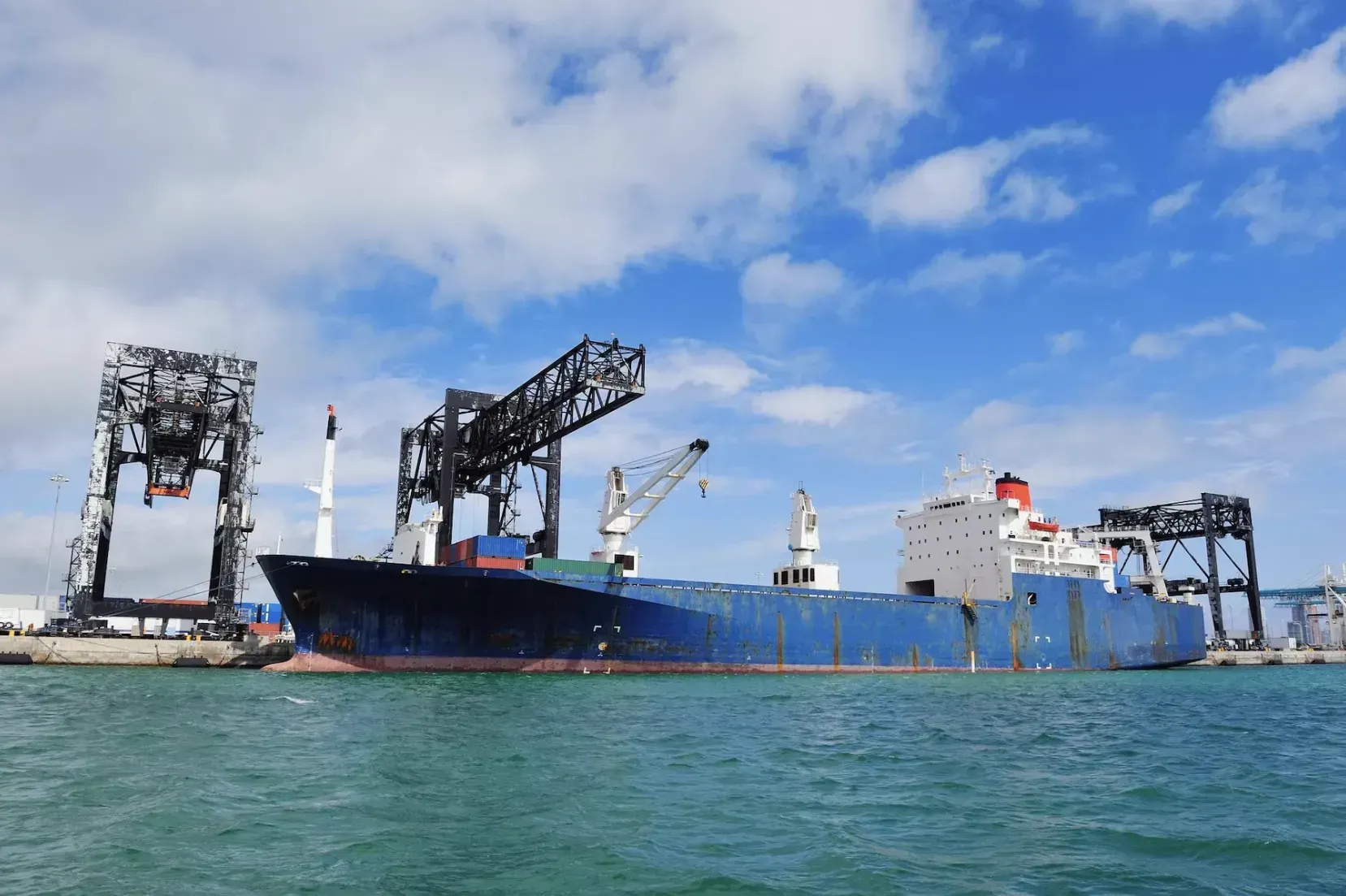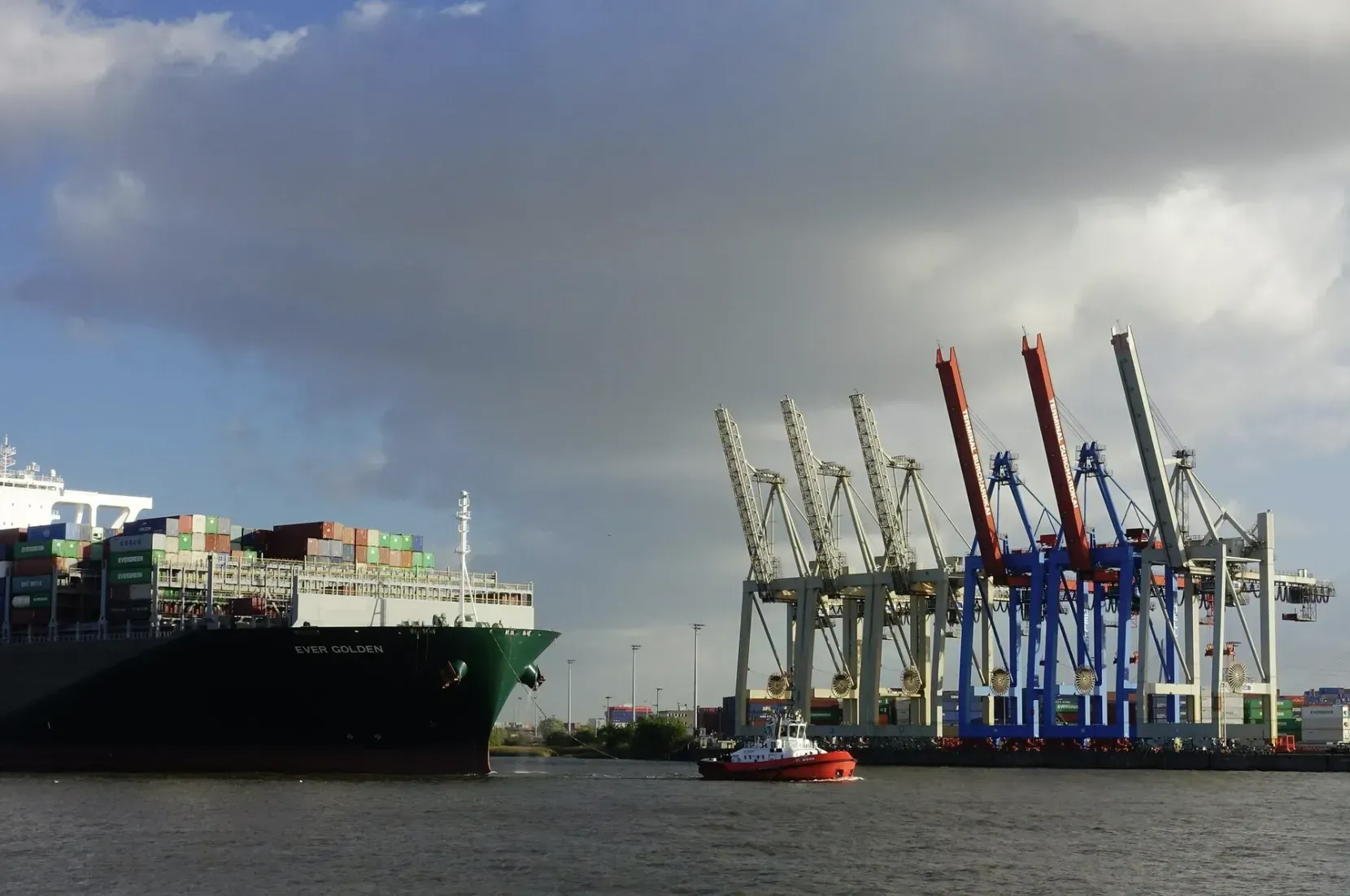International maritime freight transport

Maritime freight transport is a cornerstone of global trade. It is known for its efficiency and reliability in the international movement of goods. In Colombia, CLM Cargo offers specialized maritime transport services, recognized for comprehensive solutions and broad coverage.
What Is Maritime Transport?
Maritime transport refers to the movement of goods by sea and plays a vital role in international commerce. It allows the shipment of large volumes of cargo efficiently and securely.
Features and Advantages of Maritime Transport
- Ability to carry heavy and oversized cargo
- Lower transportation costs compared to other modes
- Reliable delivery of goods to global destinations
- Flexibility in route planning and shipping schedules
Types of Maritime Transport
There are several types of maritime transport tailored to different cargo needs:
Bulk Cargo Transport
This involves transporting unpackaged bulk goods, such as dry bulk (coal, minerals) or liquid bulk (oil, chemicals), without the need for packaging.
General Cargo Transport
Refers to packaged goods transported in containers or conventional units like boxes and pallets, using specialized vessels.
CLM Cargo’s Maritime Freight Services
Solutions Offered by CLM Cargo
CLM Cargo provides a wide range of maritime transport solutions, customized to meet each client's needs. Key services include:
- Full Container Load (FCL)
- Less than Container Load (LCL)
- End-to-end shipment management, from pickup to final delivery
Advantages of CLM Cargo Services
CLM Cargo's services offer several benefits that make it an excellent choice for maritime freight:
- Real-time shipment tracking
- Personalized consulting from logistics experts
- Transparent pricing and shipping processes
Service Coverage
CLM Cargo provides extensive national and international coverage. Its logistics network ensures efficient and secure delivery of goods, always meeting agreed timelines.
Types of Containers Used in Maritime Shipping
Standard Container
The standard container is one of the most commonly used in maritime freight. Its rectangular shape and robust structure make it suitable for a wide variety of goods. Typically available in 20 or 40 feet, these containers are easy to handle and stack on cargo ships.
Open Top and Flat Rack Containers
In addition to standard containers, open top and flat rack containers are used for special loads:
- Open Top: Ideal for oversized cargo that needs to be loaded from above, as it lacks a fixed roof
- Flat Rack: Suitable for large or heavy goods, featuring collapsible sides to ease loading and unloading
Maritime Shipping Process
Booking Management and Shipment Tracking
Proper booking and tracking management is essential to ensure efficient maritime freight. This involves:
- Reserving the right container based on cargo needs
- Scheduling pickup and delivery dates
- Continuously monitoring the shipment’s location and status to guarantee on-time delivery
Pickup, Delivery, and Land Transport
The pickup and delivery process is critical in maritime shipping:
- Goods are picked up at the origin location with appropriate packaging
- They are delivered to the departure port for loading
- Pre- and post-maritime land transport ensures connection with other modes, maintaining a seamless shipping experience
Customs Clearance and Required Documentation
Customs clearance and proper documentation are vital for the legal import and export of goods. Required documents typically include:
- Commercial invoice
- Packing list
- Permits and licenses
- Bill of lading or air waybill
Customs procedures at the origin and destination ports ensure compliance with international regulations and facilitate smooth cargo clearance.

Rates and Costs in International Maritime Freight
The cost of maritime freight can vary depending on several factors that affect the total shipping expense. It’s important to consider these variables when budgeting for sea freight logistics.
Factors Influencing Maritime Transport Costs
- Type of container used (20-foot, 40-foot, open top, flat rack, etc.)
- Transit time: longer shipping durations usually lead to higher logistical costs
- Type of cargo: bulk vs. general cargo impacts pricing
- Weight and dimensions of the goods: size and weight directly affect the transport rate
Cost Differences Between FCL and LCL
Two common shipping options in maritime freight are FCL (Full Container Load) and LCL (Less than Container Load), each with distinct pricing systems:
- FCL: You pay for the full use of a container, making it more cost-effective for large volumes.
- LCL: You share container space with other shipments, which can result in higher costs per unit of space used.
Regulations in International Maritime Shipping
International maritime transport is governed by a set of rules and standards that ensure proper operation and protect the interests of all parties involved. The World Trade Organization (WTO) plays a central role in regulating global maritime trade.
WTO’s Role in Maritime Transport
The WTO promotes transparency and fairness in shipping operations among its member states. Through international agreements, it provides a clear and predictable framework for maritime logistics companies.
WTO agreements aim to enhance competitiveness and efficiency in the shipping industry by:
- Encouraging free competition
- Eliminating trade barriers
- Promoting liberalization in maritime services
Principles of the General Agreement on Trade in Services (GATS)
The GATS establishes the international regulatory framework for services—including maritime transport. It outlines commitments that member countries must uphold to facilitate open markets.
Key GATS principles include:
- Non-discrimination
- Transparency
- Predictability
- Reciprocity
These principles ensure a fair, competitive environment for global maritime service providers.
Classification of Goods for Maritime Transport
Goods in maritime logistics are typically classified into:
- Bulk cargo: Includes solids, liquids, or gases transported in specialized vessels.
- General packaged cargo: Stored in containers or packaging units for easier handling and transport.
Types of Vessels Used by Cargo Type
- Container ships: Designed for transporting 20- or 40-foot standard containers, offering secure and efficient loading.
- Bulk carriers: Transport solid bulk cargo (e.g., grains, coal, minerals) with optimized hold space.
- Tankers: Handle large volumes of liquids like oil, fuel, or chemicals, ensuring safe handling of hazardous cargo.
- Ro-Ro ships (Roll-on/Roll-off): Used for wheeled cargo such as cars, trucks, or heavy machinery, allowing for rapid loading and unloading.
The Role of Maritime Transport in Global Trade
Maritime transport plays a crucial role in international trade, acting as a backbone of the global supply chain.
Importance of Maritime Shipping in Global Commerce
It enables the efficient distribution of goods worldwide, connecting nations and continents and supporting the flow of trade at a large scale.
Facilitating Global Trade Exchange
Thanks to maritime shipping, the exchange of goods and products between nations becomes feasible, contributing significantly to economic growth and the development of international commerce.
















